Iphone 12 Compared To Iphone 8
Our Verdict
The iPhone 12 sports a gorgeous design, full 5G support, great cameras and strong performance. However, the limited base storage is a drawback.
For
- Attractive new design with MagSafe
- Comprehensive 5G coverage
- Impressive dual cameras
- Fastest performance in a phone
- Solid battery life
Against
- Only 64GB of base storage
- 60Hz display
- No charger or headphones in box
- Digital zoom could still use work
Tom's Guide Verdict
The iPhone 12 sports a gorgeous design, full 5G support, great cameras and strong performance. However, the limited base storage is a drawback.
Pros
- + Attractive new design with MagSafe
- + Comprehensive 5G coverage
- + Impressive dual cameras
- + Fastest performance in a phone
- + Solid battery life
Cons
- - Only 64GB of base storage
- - 60Hz display
- - No charger or headphones in box
- - Digital zoom could still use work
iPhone 12 review: Specs
Price: $729 unlocked; $699 on contract
OS: iOS 14
Display: 6.1-inch OLED (2532x1170)
CPU: A14 Bionic
Storage: 64GB, 128GB, 256GB
Rear camera: 12MP wide (ƒ/1.6), 12MP ultrawide (ƒ/2.4)
Front camera: 12MP (ƒ/2.2)
Battery: 2,815 mAh
Battery life: 8:25 (5G), 10:23 (4G)
Size: 5.78 x 2.81 x 0.29 inches
Weight: 5.78 ounces
The iPhone 12 is one of best iPhone values around now that it has a discounted price of $699. It's still among the best phones you can buy overall, offering an attractive design, full 5G connectivity, good cameras and better performance than most Android phones.
Even before the iPhone 13 appeared, the iPhone 12 was far from perfect. A low amount of base storage and the lack of a charger included in box means this iPhone isn't as affordable as it initially seems. Additionally, some of the best features in the Android realm — like the powerful digital zoom and fast-refresh rate displays of the Samsung Galaxy S21 — are missing in action here.
The iPhone 12 mini is worth a look if you want something cheaper and smaller, and the iPhone 12 Pro series is better if you want a telephoto lens. But the regular iPhone 12 gets our nod for being a great all-around phone. See our iPhone 13 vs. iPhone 12 comparison for more info.
Our full iPhone 12 review below shows why this phone is still very much worth your consideration.
- Want better cameras? Check out our iPhone 12 Pro review
- Best iPhone 12 cases
iPhone 12 review: Release date and price
The iPhone 12 was released in October of 2021 and it remains available from Apple as well as a number of carriers. The newly reduced price is $699 for 64GB of storage. Upping that to 128GB costs $749 and 246GB costs $849.
In the U.K., the iPhone 12 now tarts at £679 for the 64GB model, but pay an extra £30 and you can get 128GB of storage for £849. The 256GB handset now costs £829.
If you want the lowest price, we continue to track iPhone 12 deals for all of Apple's phones. You can save anywhere from $110 to $790 on an iPhone 12 when you buy from Apple and trade-in your current iPhone, assuming you've got an iPhone 8 or later. (Newer models fetch the highest return.)
Apple isn't shipping a charging adapter or headphones in box with the iPhone 12, so you'll need to pay extra if you need one.
iPhone 12 review: Design
Apple rarely alters the physical design of the iPhone from generation to generation, and thus any change — no matter how small — is typically received with enthusiasm. You can chalk up the iPhone 12's new flat-edge aesthetic as one of those more modest revisions.
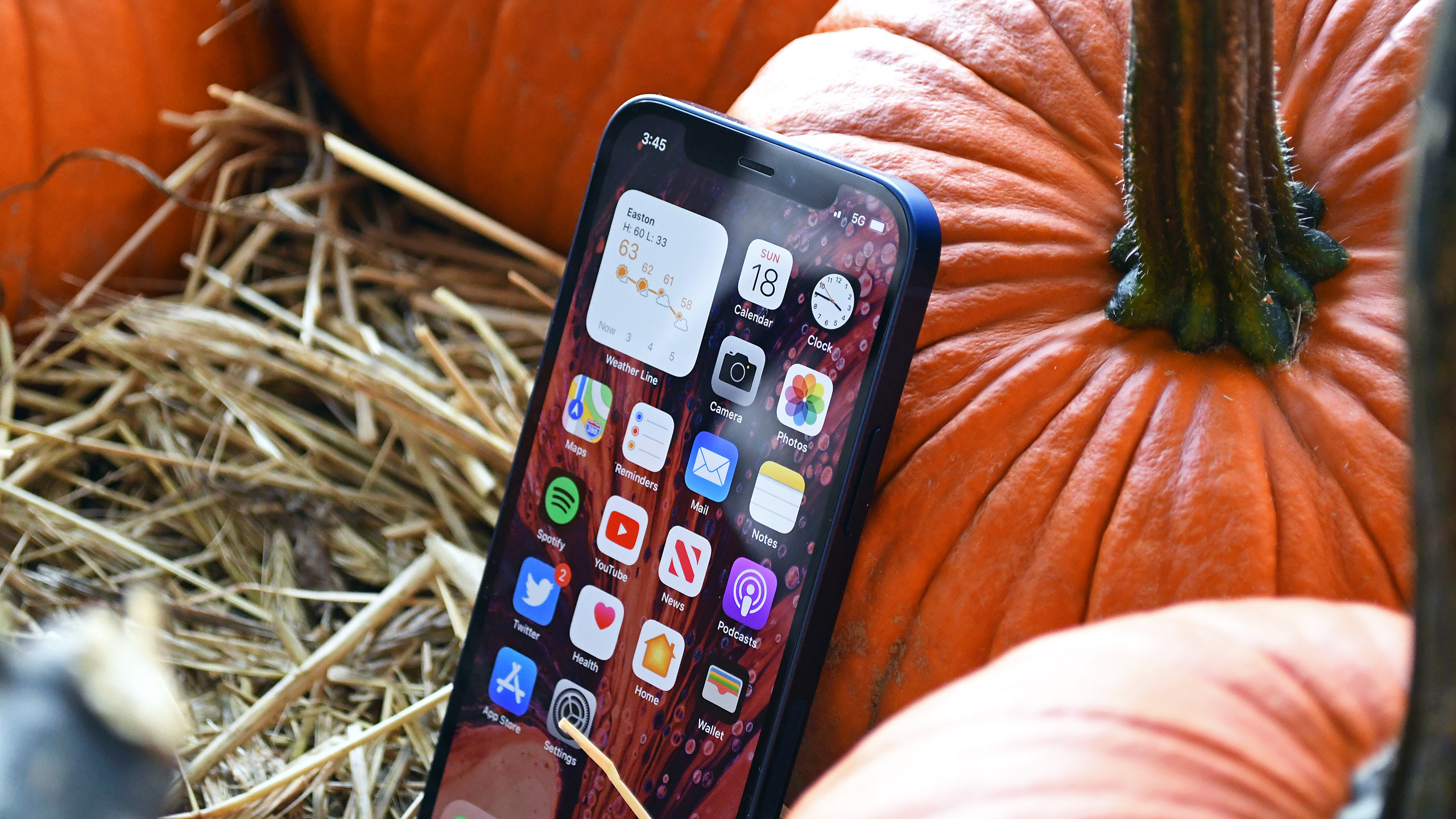
Sure, the flat edges look nice enough and offer a much appreciated change of pace from the last several consecutive years of rounded iPhones. What's more, they improve the iPhone 12's durability in tandem with Apple's new Ceramic Shield material, as the rounded frames of previous iPhones actually made them more fragile.
We will be conducting our own drop tests, but the Ceramic Shield display held up well in EverythingApplePro's torture test on YouTube. Both the iPhone 12 and iPhone 12 Pro did not crack at hip or shoulder height when dropped, and the display on the regular iPhone 12 didn't even crack from 10 feet, though the back did.

All that said, I can't say my hands have really taken to the sharper design. Few smartphones employ flat sides these days, and the iPhone 12 reminds me why. The edges dig into your palm, and make the entire device a bit harder to grip. For example, the iPhone 12 measures 0.29 inches thick — which is perceptibly identical to the 0.31-inch-thick Pixel 5. However, the Pixel 5 feels more slender in the hand, because it naturally fits the curvature of your palm.
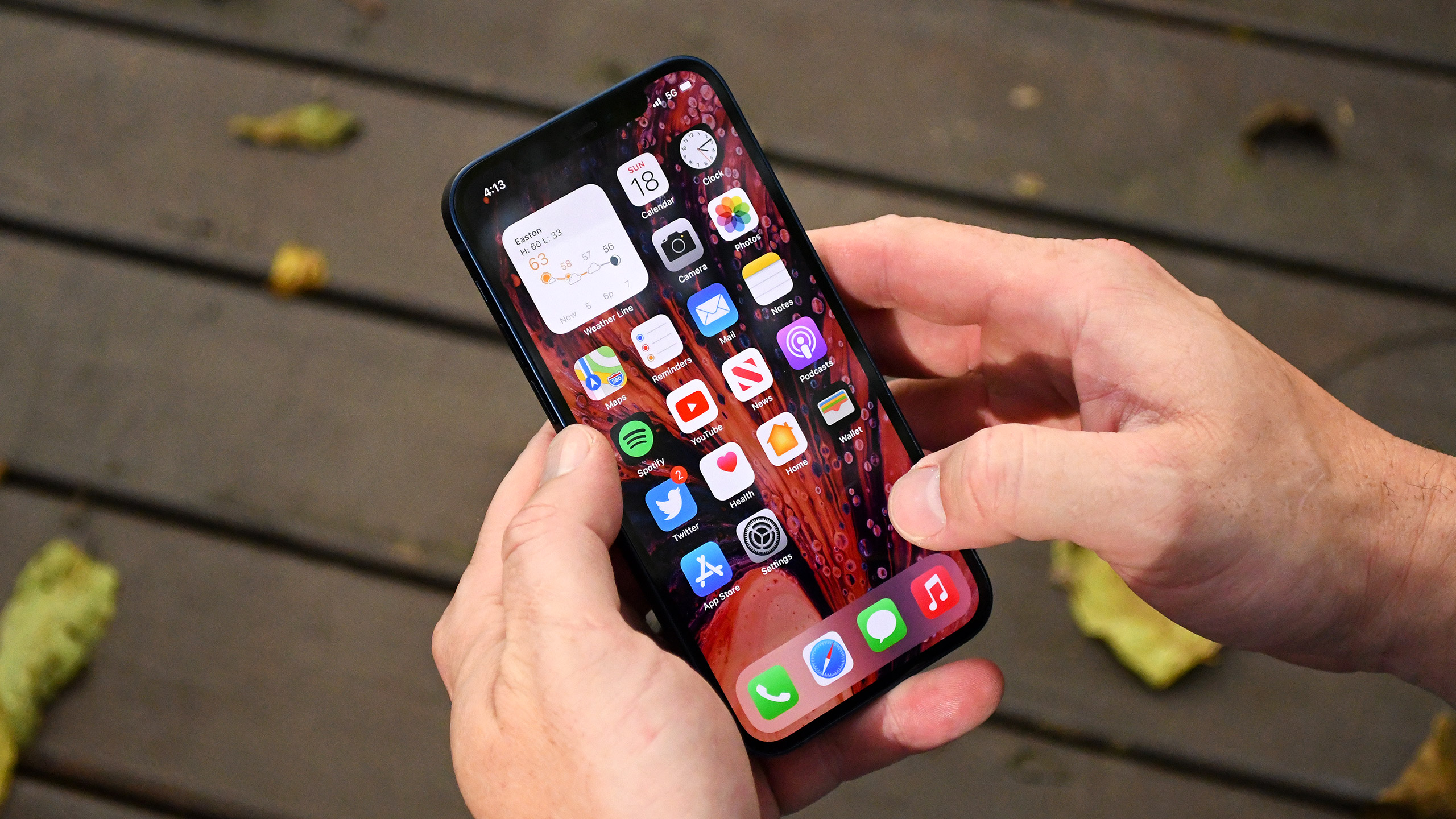
Additionally — and I won't blame you for dismissing this as a nitpick — as a longtime iPhone 11 Pro user, I can't help but feel the 6.1-inch iPhone 12 is a hair taller than it really needs to be. I find the 5.8-inch size the perfect compromise between display real estate and pocketability, but with the iPhone 12 series, Apple has left that form factor to die. Now, those who desire a more compact device will have no choice but to go for the 5.4-inch iPhone 12 mini. And though I commend Apple for making a small flagship phone in the year of our lord 2020, I can't help but feel a 5.4-inch display might be a bit too tiny for modern users.
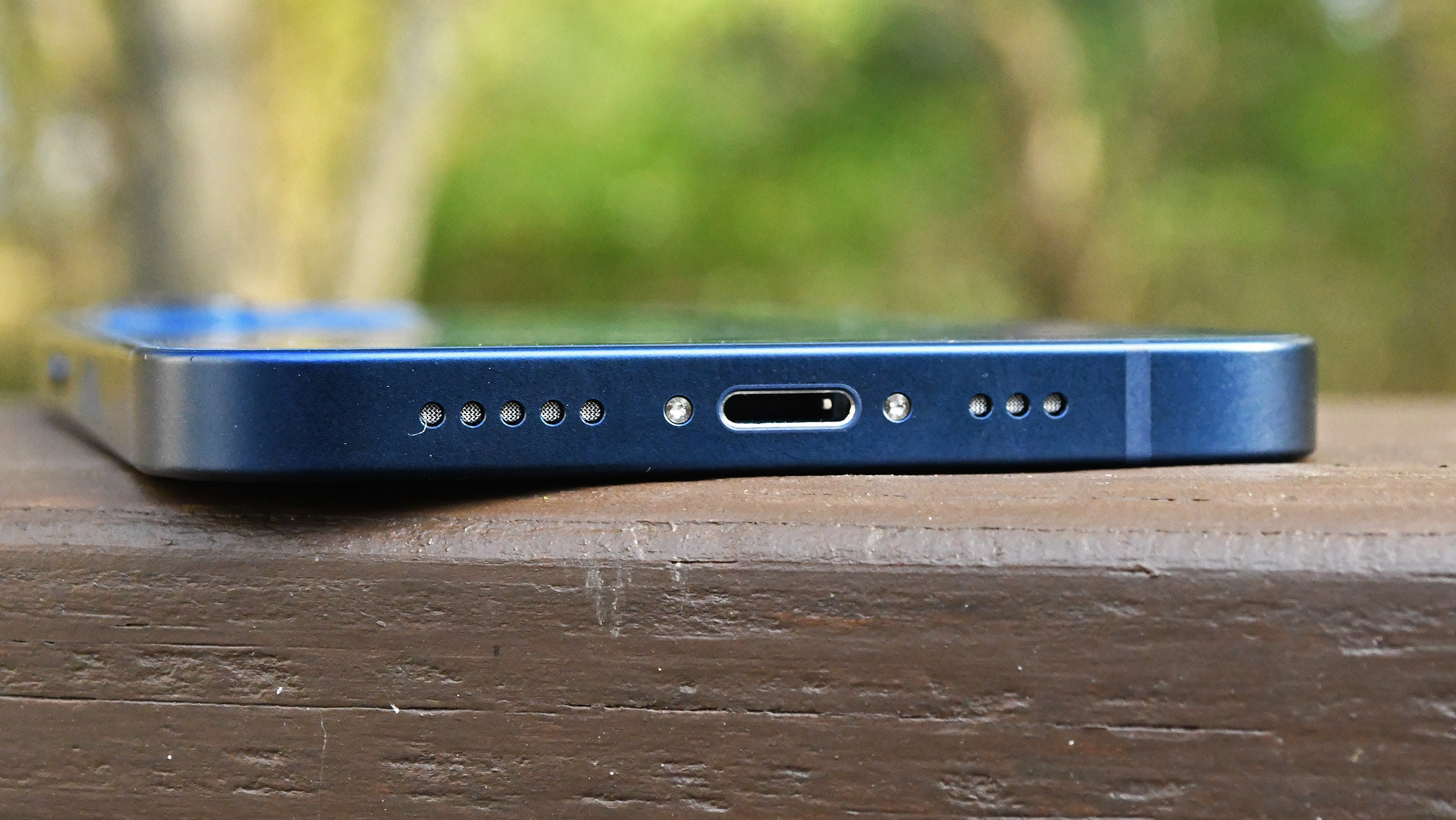
Nevertheless, I'm generally smitten by the iPhone 12's design. I like that Apple's shaved down the bezels considerably compared to the iPhone 11 and XR, though a slightly reduced notch would have been appreciated. And while I'm not a huge fan of the new blue color — I find this sort of navy a bit dull — I like the mint green on offer, and I especially like the elegant simplicity of this design. The iPhone 12 comes three other colors — black, white and red.
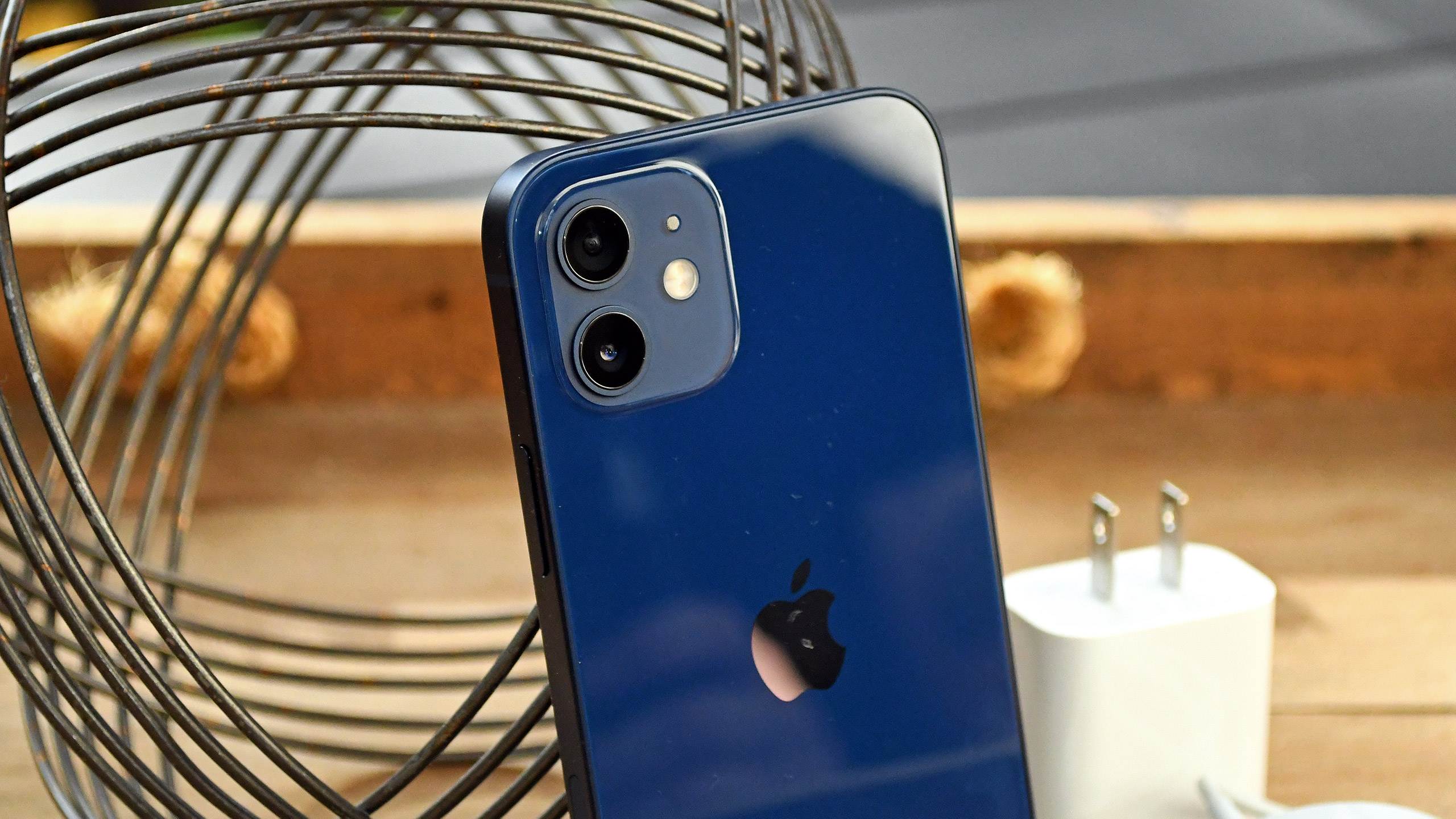
The iPhone 12 feels substantial and premium, and not necessarily any less luxurious than the iPhone 12 Pro. You even get the same caliber of IP68 water resistance here as in the Pro (20 feet for 30 minutes) which far exceeds other handsets on the market, as well as the aforementioned crystal-infused Ceramic Shield material protecting the display, which Apple estimates is four times less likely to shatter when dropped — a claim we look forward to testing ourselves soon.
iPhone 12 review: MagSafe
While the miracle of magnets continues to baffle the world's top minds, Apple has made them a fundamental aspect of the iPhone 12's design. A ring of magnets centrally placed on the back of the iPhone 12 enable Apple's new MagSafe ecosystem of accessories, from wireless chargers to cases and wallet attachments that simply snap on and off.

There's nothing inherently unique about Apple's brand of wireless charging here. The company's own $30 MagSafe charging puck uses the very same Qi standard as any other wireless charger for any other phone — it just incorporates magnets, too. Your iPhone 12 will still be compatible with whatever wireless chargers or Qi accessories you already have, though to get those peak 15-watt speeds, you'll need a first- or third-party solution that incorporates MagSafe.
The bad news is that MagSafe is slower than Apple's 20W wired charger. Much slower. In a third-party charging test, the iPhone 12 charges to 50% full in 28 minutes using the 20W fast charger. The 15W MagSafe charger took an hour.
Still, that's not to discredit the philosophy behind MagSafe, which makes a lot of sense. The magnets help localize the iPhone 12 on chargers and makes accessory attachment more convenient. And it's surely easier to top off your phone by setting it down a puck that instantly aligns itself perfectly, rather than fumbling around at your bedside to plug in a tiny Lightning connector.

I think it's going to take more third-party involvement and experimentation before we really see MagSafe reach its full potential. Case in point, Apple's leather wallet attachment. It's a clever idea, and I have no doubt some iPhone owners will love it. But the magnets within the iPhone 12 aren't quite strong enough to keep the wallet rigidly attached in all instances. In fact, the friction of pulling the iPhone 12 out of my jeans pocket was enough to knock the wallet off center on a few occasions, which to me doesn't evoke very Apple-like design.
iPhone 12 review: Display
The iPhone 11's LCD display has unquestionably been the Achilles' heel of Apple's entry-level premium iPhones in recent years, but the iPhone 12 alleviates that. It's all thanks to a new 6.1-inch Super Retina XDR OLED display that matches what you get in the iPhone 12 Pro.
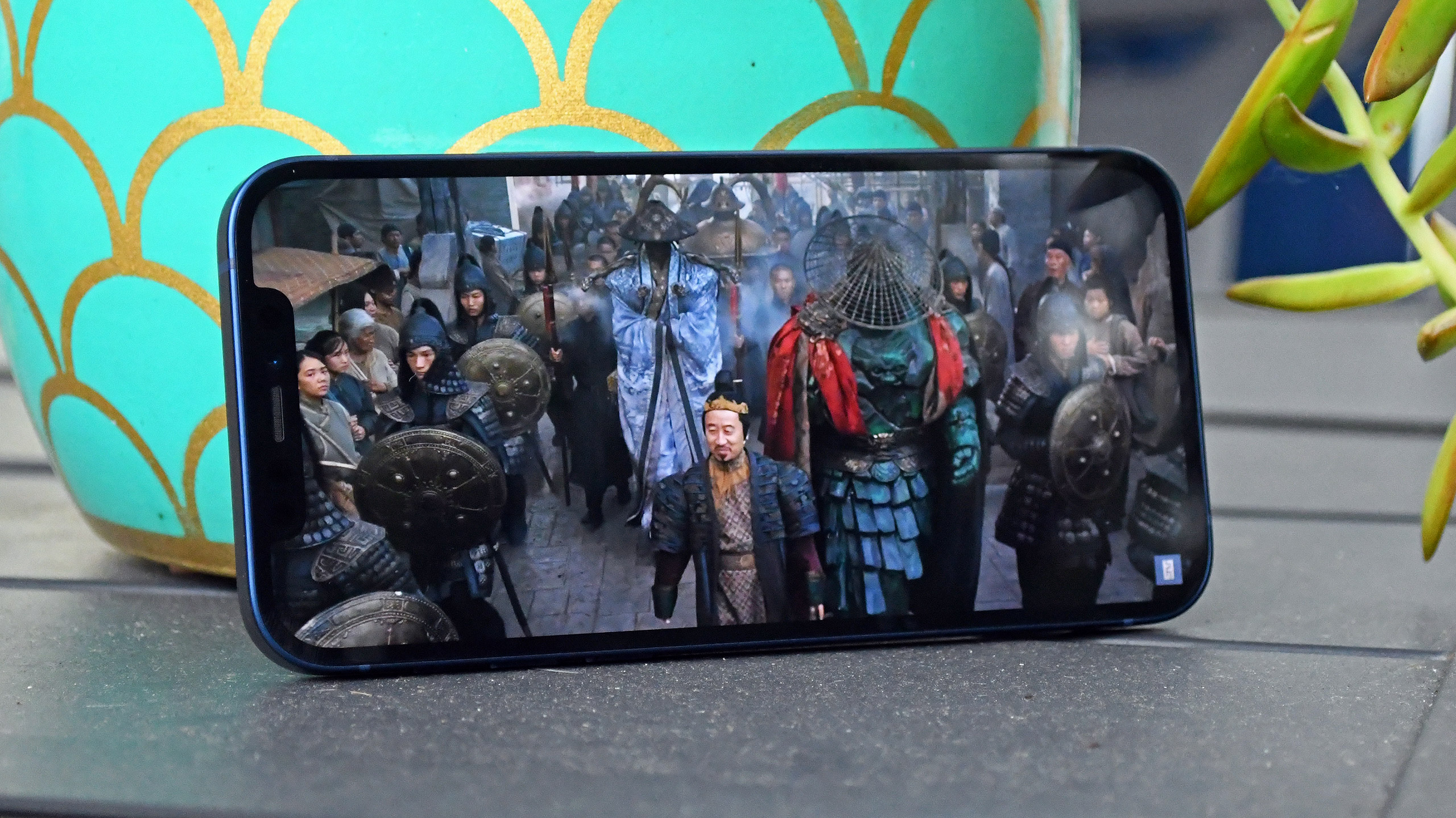
This panel packs a 2532x1170 resolution, making for a dramatic increase in the clarity of on-screen content compared to the iPhone 11's dated 1792x898 display. It's also HDR10 rated, allowing you to watch any videos recorded with the device's Dolby Vision-equipped rear camera the way they were intended to be seen.
Watching the trailer for the upcoming Monster Hunter film that really looks as though it never should have been made, I at least came away pleased by the fidelity of the scales, horns and teeth on a Black Diablos glinting in the desert sun. The black smoke from an explosion also contrasted heavily against the otherwise bright daylight scene in a way that wouldn't have looked nearly as alluring on the iPhone 11's LCD panel, with its inability to display true black.
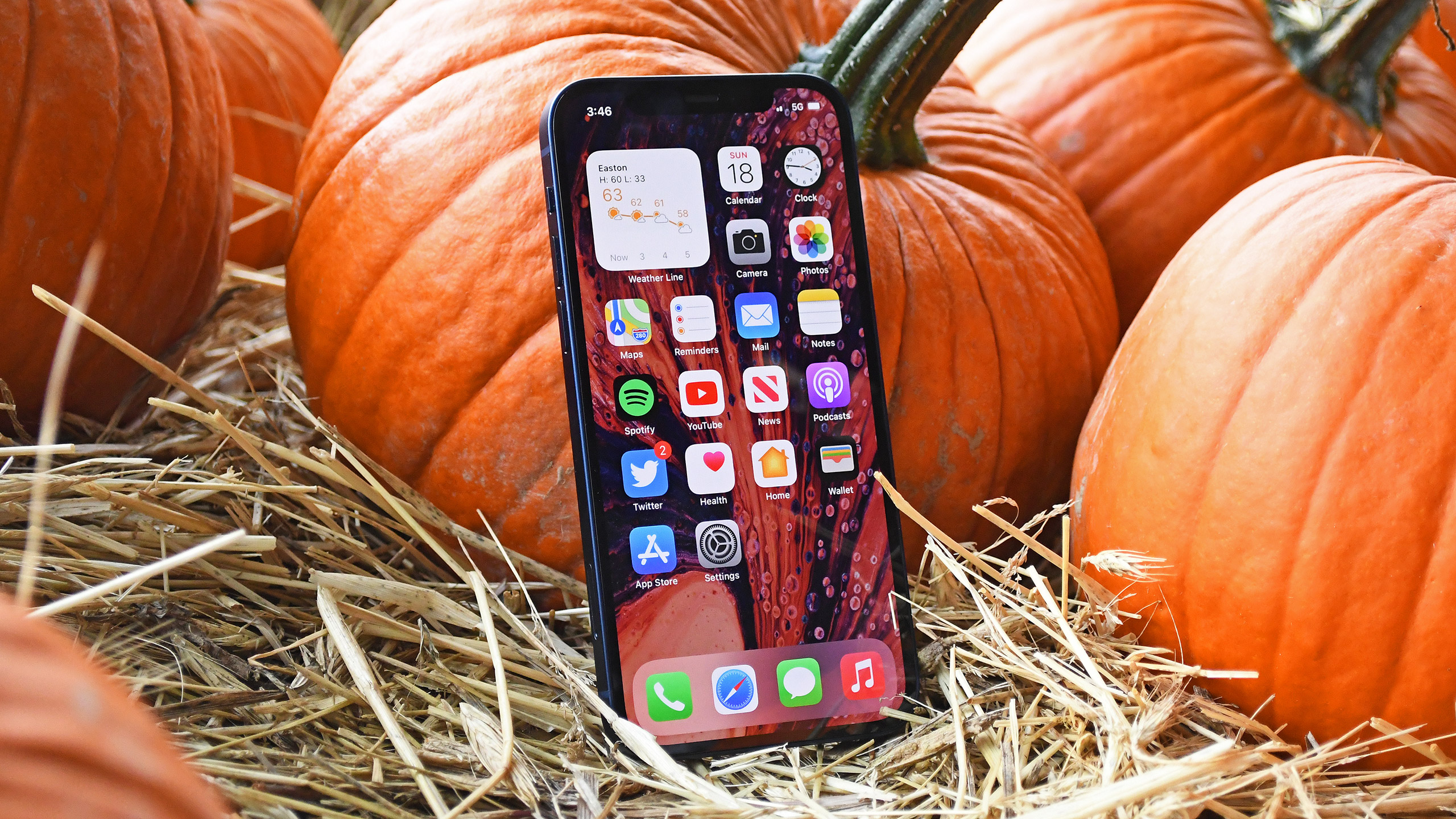
The iPhone 12's screen still isn't perfect, and the reason why is clear to anyone who has used a recent Galaxy, Pixel or OnePlus phone for any length of time. Following months of rumors suggesting the opposite, Apple decided to forgo high refresh-rate displays on the entire iPhone 12 line, which have actually become quite common in the flagship smartphone space over the past year.
As a result, animations aren't as smooth and taps and scrolls don't respond with the same immediacy on Apple's latest handsets as they do on, say, the 90Hz Pixel 5 or 120Hz Galaxy S20. Even though the iPhone 12 is more powerful than those devices — as we'll soon see later in the review — it feels slower to use at times, simply because the display isn't as athletic. And that's something Apple should surely attempt to rectify by the time the iPhone 13 becomes reality.
In terms of brightness, under our light meter the iPhone 12 topped out at 569 nits at its highest setting, which actually falls considerably short of Apple's 625-nit estimate. It was able to render 114.5% of the sRGB color space — just shy of the 122.8% of the Samsung Galaxy Note 20 — indicating slightly more restrained and natural hues, rather than oversaturation.
Looking to the Delta-E color accuracy test, the iPhone 12 scored a result of 0.29, which is surprisingly a bit worse than the iPhone 11's 0.22 result. (Numbers closer to zero indicate more accurate hues.) Nevertheless, colors seemed appropriate to my eye, and the switch to OLED alone makes this a massive leap compared to the previous generation, generally speaking.
iPhone 12 review: Cameras
Judging from the outside, you wouldn't think a whole lot has changed in the camera department for the iPhone 12. The dual-lens rear shooters are arranged in a similar fashion as they were for 2019, and both of the wide and ultrawide optics are backed by 12-megapixel sensors.
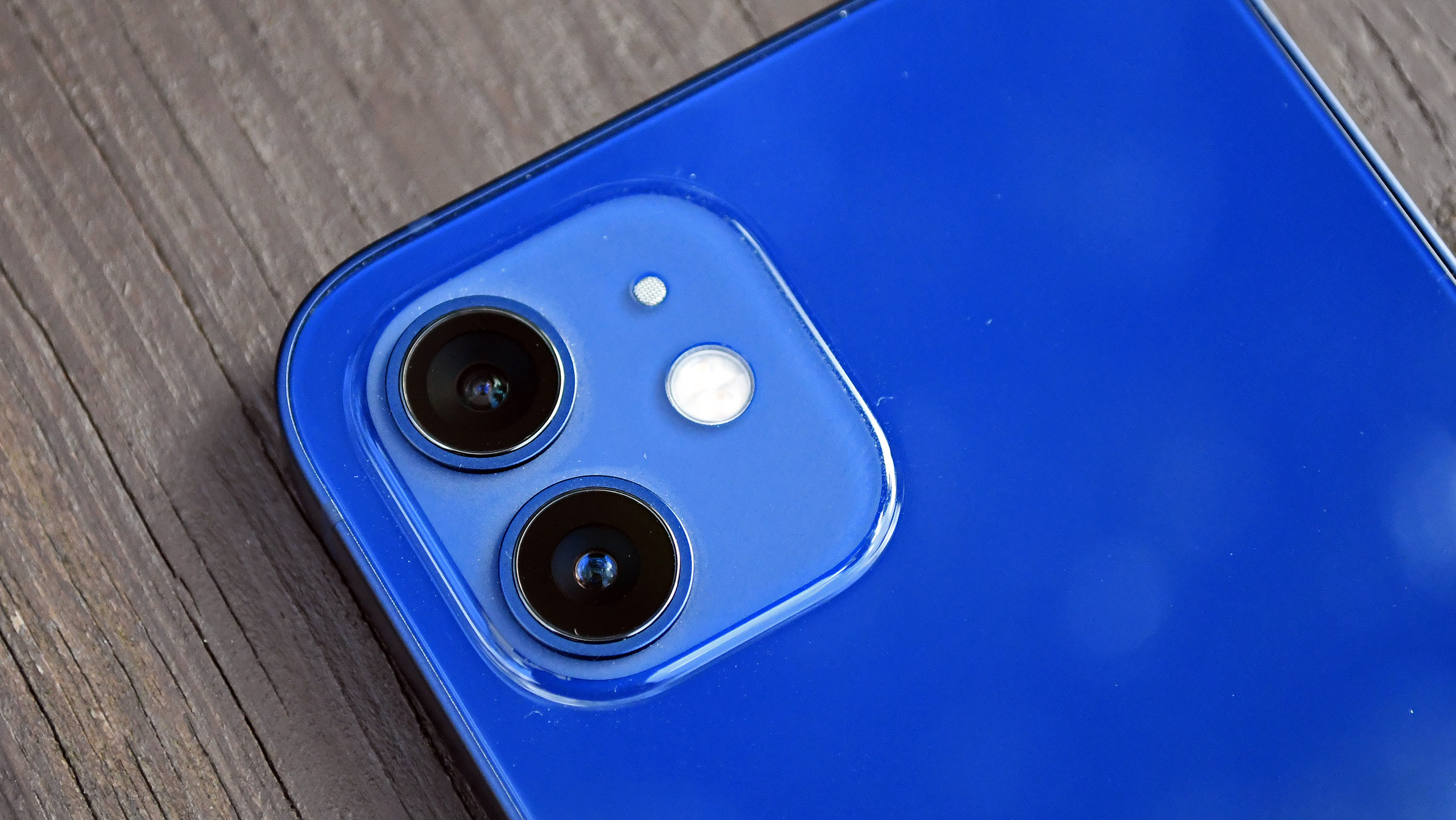
Don't let your eyes deceive you, however, as upgrades have been made. The primary camera in particular now benefits from a new 7-element design with an ƒ/1.6 aperture, the largest yet in an iPhone. The upshot of both of these changes is a 27% improvement in low-light performance, which, coupled with advancements to Smart HDR and Deep Fusion, should translate to more detail in even the least favorable conditions.
So let's begin, then, with a couple of Night Mode shots that illustrate what a year's worth of improvements have done for the iPhone's low-light performance. Both of these photos make for dramatic, stunning night scenes, but the iPhone 12's rendition is slightly sharper across the board, with more lifelike hues inside the shadow-clad brick and better sensitivity to specular highlights, evident in the way the brick picks up the light from the lamps above. Still, the iPhone 11 Pro doesn't lose out by much at all to the newer handset.
That said, Apple's got some work to do. Google looks to have the upper hand at night, judging by how the iPhone 12's best work compares to the Pixel 5's in the example above. While Apple's software emboldens object boundaries, giving everything in the frame a tinge more depth, Google's algorithms deliver a universally more visible result, in tandem with far less overall noise. There's some ugly vignetting going on around the edges of the iPhone 12's shot that plainly isn't there in the Pixel's shot.
In daylight, the iPhone 12's main camera gives you little to complain about. While the Note 20 painted this idyllic lakeside scene a bit more sharply, particularly within the distant trees, I largely prefer the iPhone 12's attempt for its more realistic treatment of colors, from the deep blue mid-afternoon sky to the yellows, oranges and greens encircling the water. Samsung once again went overboard with post-processing here, as it has a habit of doing.
When we zoom into that fountain off to the right, though, the iPhone 12's limitations become painfully obvious. There's no optical zoom on offer with the iPhone 12 — for that, you have to spend more on the iPhone 12 Pro or Pro Max. But even then, you wouldn't get the same crystal clarity provided by the Note 20's 3x hybrid zoom, which nails the beads of water, the ripples on the lake's surface and the wall of trees in the background.
Here we see the very same lake, now viewed through the ultrawide lenses of the iPhone 12 and $749 OnePlus 8T. Both of these shots fall astray in different respects; the iPhone 12 bungles the white balance, producing a green cast in the water and clouds, while the OnePlus 8T's photo just isn't sharp enough at all, and heavily distorts the image along the perimeter.
Rounding out this fall-themed photo op is a pair of portraits of my colleague Jesse, taken with the iPhone 12 and Pixel 5. Interestingly, the iPhone 12 defaults to a more pulled-out perspective for portraits than the Pixel 5, which automatically applies some cropping.
Still, the iPhone 12's version still looks a bit sharper to my eye, with better treatment of Jesse's skin tone, and Smart HDR deftly managing the contrast between the deep shadows blanketing his right shoulder and the rest of his hoodie. The iPhone 12 also applies a more precise bokeh around Jesse's hair and ears, which is often the challenge of simulated shallow depth-of-field portraits like these.
To test out the capabilities of Apple's Deep Fusion mode, which favors scenes with granular details in medium-light scenarios, I used the iPhone 12 and Pixel 5 to grab a shot of a painting on canvas. Deep Fusion is designed to composite various exposures of different lengths for optimal sharpness, but I was surprised to find Google's handset actually generated the most precise output here, drawing the hatchwork texture of the canvas with a crispness the iPhone 12 couldn't quite match. However, I think the iPhone's treatment of colors at large — and the warmth it lends to the reds, whites and the neutral-toned background — ultimately results in a more appealing image.
A better example of Deep Fusion at work may be this selfie I took as the sun was going down, where the iPhone 12 rendered the individual fibers in my sweater with richness and nuance compared to the Note 20's blurry output. The iPhone 12's 12MP front-facing camera unsurprisingly captures more detail than the Note 20's 10MP sensor, but Apple's algorithms also don't uncannily over-brighten shadows and drain contrast from my face like Samsung's do. If I was forced to post one of these to Instagram, the choice wouldn't be difficult.
Overall, the iPhone 12 lands among the top tier of its price bracket where camera performance is concerned, but it's not the best in every scenario. For night shots, I'd still rather have a Pixel, which can paint the same challenging scenes with less noise. And if I was working from a distance, I'd rather have the Pixel 5 as well for its superior digital Super Res Zoom, or one of Samsung's devices — either the Galaxy S20 FE or the Note 20 — for their 3x optical and hybrid zoom systems.
iPhone 12 review: Video
Apple has gone all in on 4K HDR video recording with the iPhone 12 line. Like the iPhone 12 and Pro Max, the regular iPhone 12 (and the smaller iPhone 12 mini) can record Dolby Vision video, albeit only at 30 frames per second to the Pro models' 60. Dolby Vision is a type of HDR encoding that goes beyond the standard HDR10 format to provide superior color depth, while ensuring a consistent visual presentation as closely aligned to the source material as possible, no matter where or how the content is viewed.
It may be hard to visualize, but trust us on this one — the difference is immediately clear when observing the same content side-by-side in HDR and SDR. I recorded a short video in a park as the sun descended behind the trees, and the gap in contrast in each instance was eye-opening. For one, the sky was markedly brighter in the Dolby Vision capture, and I could actually make out individual leaves and trees reflecting the sun. These aspects were faded, washed out and obscured in the SDR take, and as someone who has been using an iPhone 11 Pro for video for the better part of a year, I had no idea what I'd been missing.
Now, to be fair, the iPhone 12 is far from the only smartphone out there that can shoot HDR video. However, it is the only Dolby Vision-certified one, and I can definitely say that HDR video I've shot on our Galaxy S20 Plus has never looked anywhere near as good unedited as what the iPhone 12 churns out by default.
iPhone 12 review: 5G
Lots of smartphones today support 5G, and you don't even really need to pay more for the privilege anymore. However, Apple's philosophy toward 5G is what distinguishes the iPhone 12 from all other 5G phones.

Whereas the vast majority of 5G handsets support one kind of 5G and not another, or only the specific bands necessary to work on a certain network, the iPhone 12 goes all out. It is built to run on the most bands of any 5G phone, which means a greater chance of 5G coverage, especially in these spotty early days of the technology. What's more, the iPhone 12 works on both sub-6GHz 5G — the nationwide 5G that has formed the backbone of T-Mobile and AT&T's service as of yet — in addition to much faster and shorter-range millimeter-wave 5G, like what Verizon has focused on deploying in America's cities.
This dual-pronged approach to 5G is critical, because it means when 5G eventually does become ubiquitous, your 5G-capable iPhone won't be hamstrung with a modem that only supports some networks and not others. Mind you, that day could be far off in the distance; on AT&T's network in a Pennsylvania suburb, I tended to see downloads in the neighborhood of 85 Mbps on our iPhone 12 while pulling a two-bar signal. That's serviceable, but only about as third as quick as the fastest LTE Advanced networks we've tested.
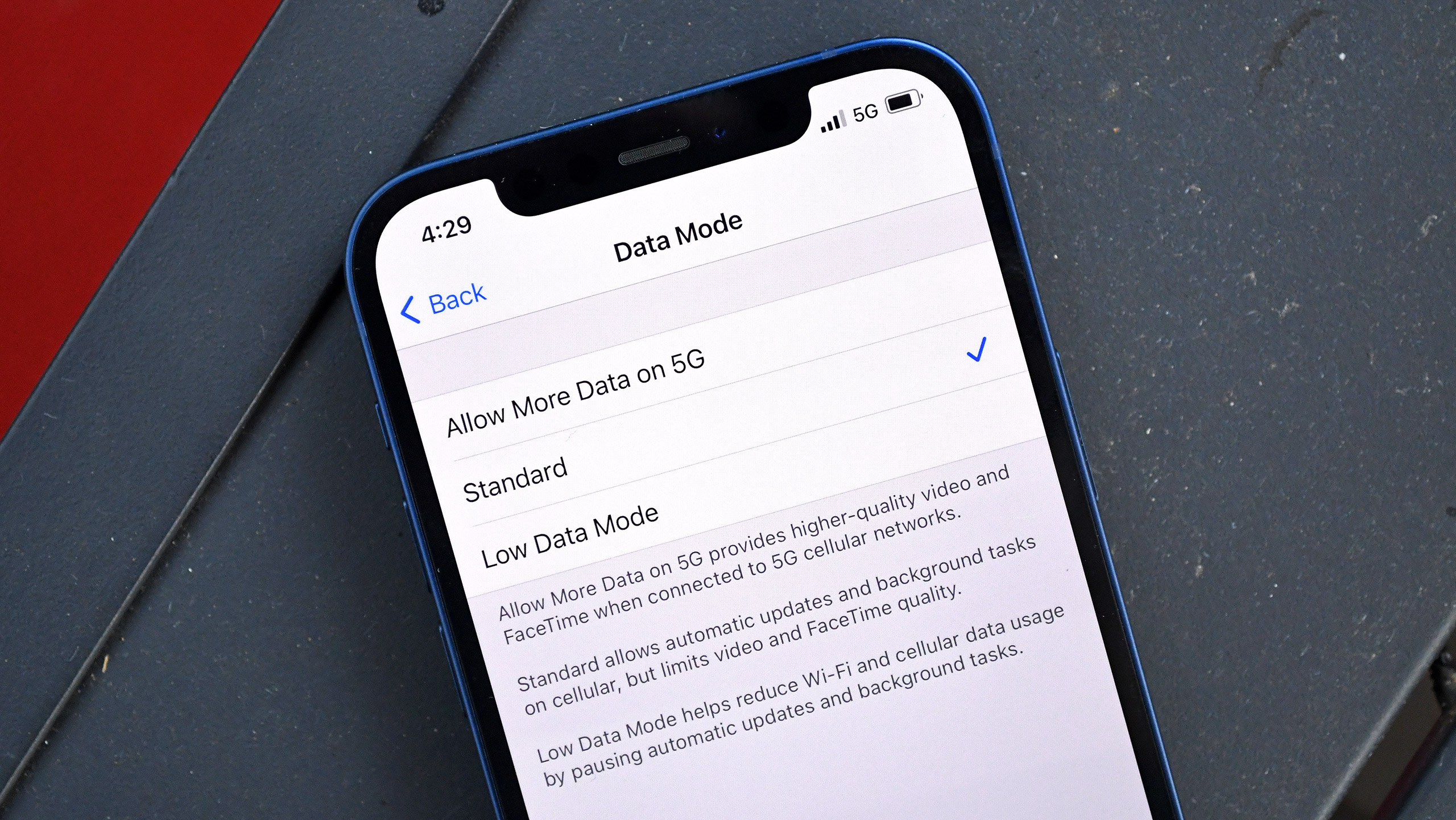
5G does increase demand on the iPhone's battery, however, and so to that end, Apple has developed Smart Data Mode. This feature intelligently switches between LTE and 5G depending on whether or not the device really needs the extra speed. For example, if you're simply streaming music over Spotify with the screen off, your iPhone 12 may elect to remain on 4G to save power. But the second you begin actively web browsing or attempting a FaceTime HD call, 5G will kick in in full effect. Smart Data Mode is totally optional; if you'd rather have 5G firing at all times, you can deem it so in the phone's settings.
iPhone 12 review: Performance
Armed with the first 5-nanometer processor ever embedded in a smartphone — Apple's new A14 Bionic — the iPhone 12 delivers best-in-class performance that never wavers. The A13 Bionic chip in the iPhone 11 series was already faster than Qualcomm's top-tier 2020 silicon, the Snapdragon 865 Plus, but the A14 extends that gap further still. Now that it's 2021, however, we're starting to see more Snapdragon 888 phones, including the Galaxy S21 series.
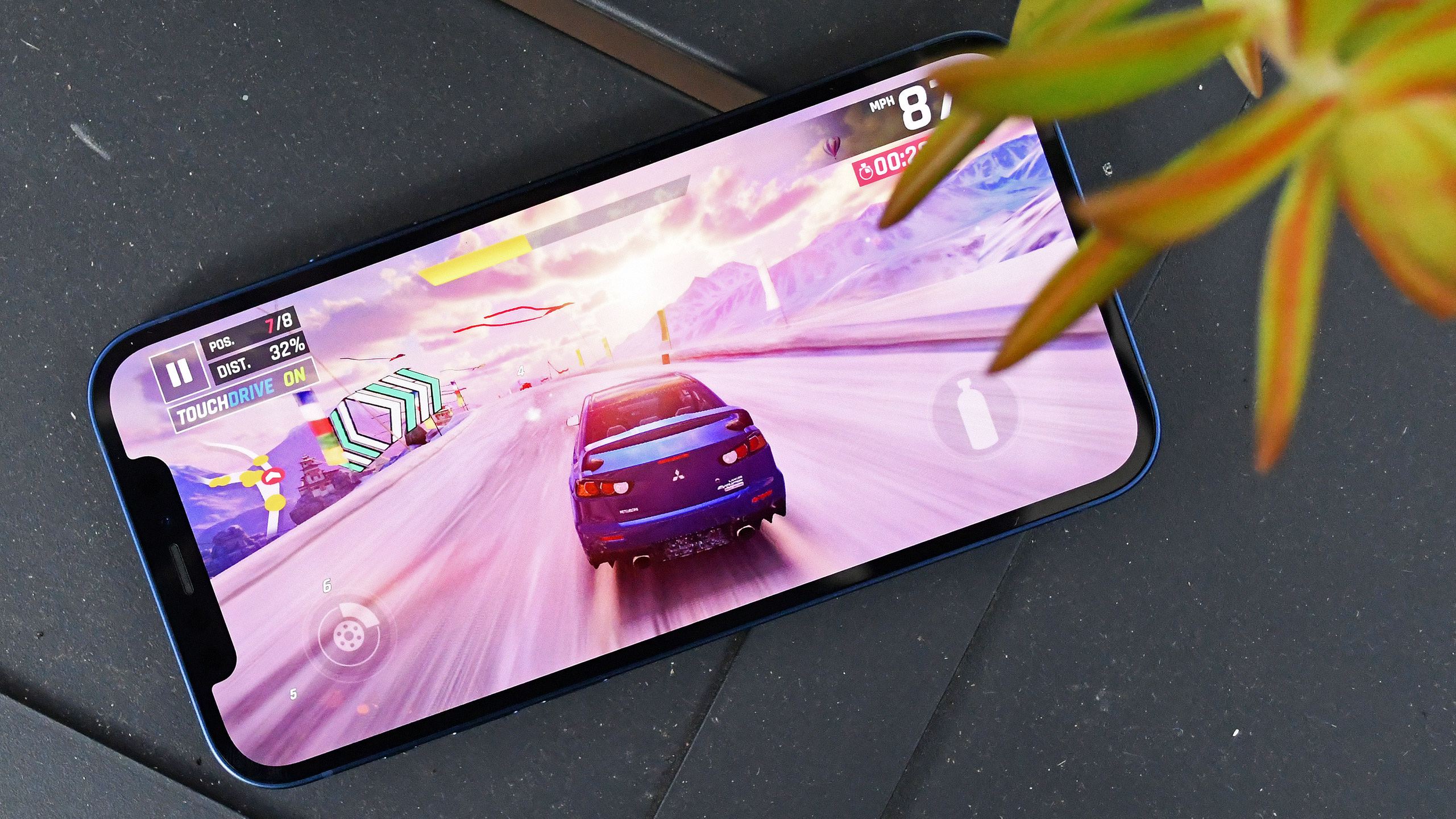
Most phones need about a minute or more to complete our video encoding test, where a short 4K video is transcoded to 1080p using Adobe's Premiere Rush app. The iPhone 11 Pro needed 46 seconds to complete this task; the 888-equipped Galaxy S21 Ultra, 1 minute and 2 seconds. The iPhone 12, though? Just 26 seconds.
The Geekbench 5 test, which measures overall system performance, shows a similar advantage for Apple's newest CPU. Here, the iPhone 12 set a blistering pace with a score of 3,859 in the multicore portion of the benchmark. The Galaxy S21 Ultra garnered 3,440 points.
And Apple hasn't skimped on the graphics side of things, either. Apple says the GPU inside the A14 Bionic is 50% faster than the one in the A13. While the latest mobile games don't always take full advantage of phone makers' rapid innovation, I can say that Asphalt 9 Legends — a game that can occasionally be chuggy on some higher-end Android phones — felt smooth and sharp on the iPhone 12. (Of course, a faster refresh-rate display would have heightened the illusion of responsiveness and immersion, but that's another issue.)
A better measure of performance is 3DMark's Wild Life graphics benchmark, which tasks devices with rendering complex, taxing scenes in real-time. The Galaxy S21 Ultra tops out at 34 fps in this test. The iPhone 12 hit 39 fps in our testing.
iPhone 12 review: Battery life and charging
Apple never reveals battery capacity figures for its devices, which makes it challenging to glean any insights regarding longevity from a spec sheet. A recent teardown suggests the iPhone 12 could be working with a 2,815-mAh unit, which translates to roughly 200 mAh less capacity than the iPhone 11 Pro had at its disposal.
Nevertheless, larger screen iPhones tend to perform decently in our custom battery test, where devices continuously surf the web over cellular at 150 nits of screen brightness.
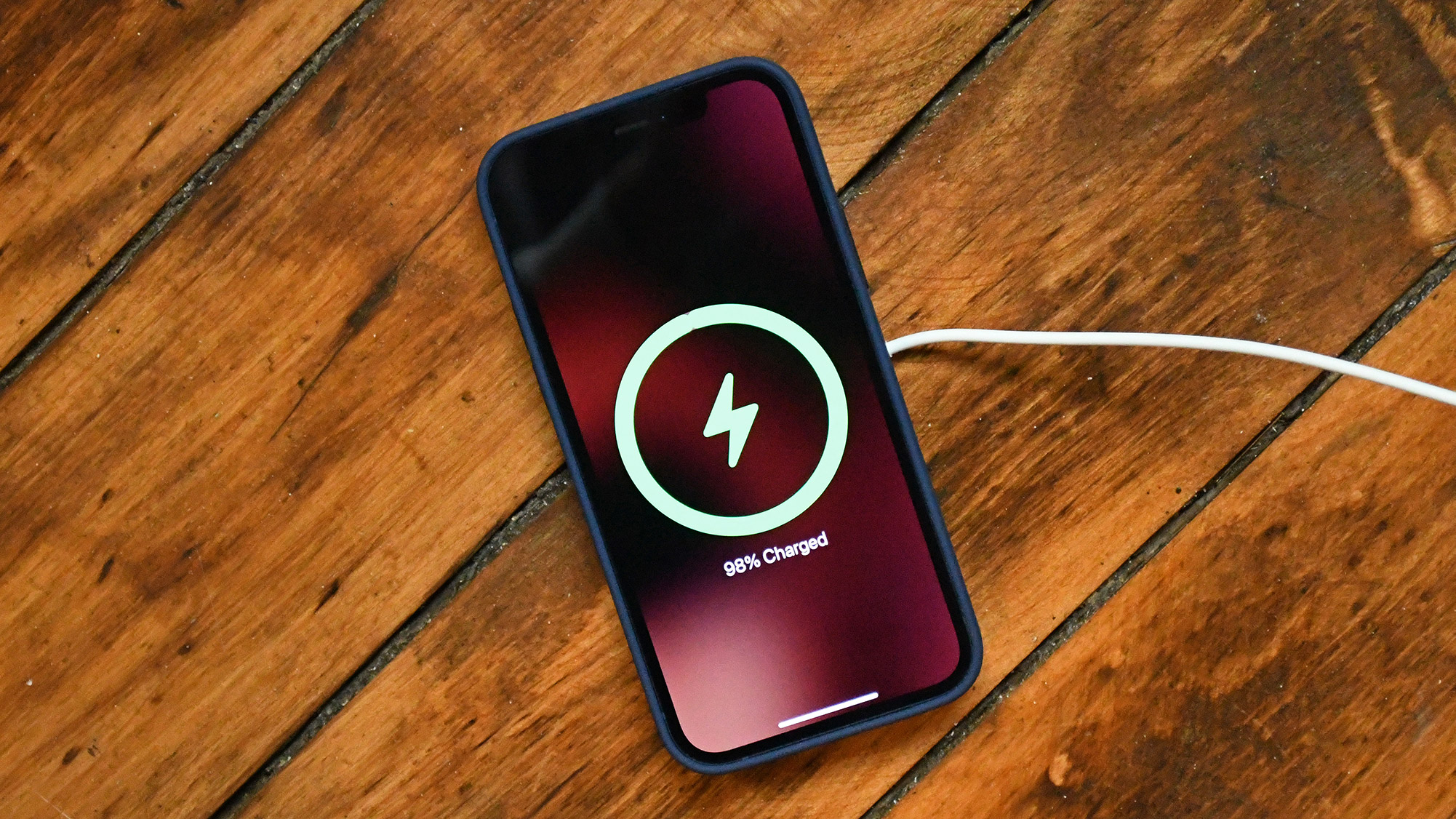
For a bit of perspective, the iPhone 11 tallied 11 hours and 16 minutes in this test, and we deem anything over the 11 hour mark to be very good. The iPhone 12, however, averaged 8 hours and 25 minutes in the very same test, which would appear to be a significant decrease.
However, there is a deeper story here. Like the iPhone 11, Apple rates the iPhone 12 for an identical 17 hours of video playback, along with 65 hours of audio. However, the iPhone 11 didn't have 5G to contend with. And when we ran our test again with 5G switched off in favor of LTE, the iPhone 12 performed better — a lot better.
The iPhone 12 lasted 10 hours and 23 minutes on 4G — two hours longer than its 5G time. If we had to guess, the culprit could be that 5G consumes more power, or that the limited span of 5G networks makes it difficult for the iPhone 12 to maintain a consistent 5G connection, forcing it to switch back and forth between 5G and 4G. It could very well be a combination of both factors, as we noticed some switching in our testing, but ultimately it's too early to conclusively say what the culprits are.
The battery story gets a bit worse as we approach the elephant in the room — Apple's decision to forgo a charging brick and wired headphones with every iPhone going forward.
Say what you like about how much of this can be chalked up to Cupertino's environmental initiative, but the fact of the matter is that this will leave prospective iPhone buyers without the fastest-charging solution for the iPhone 12 unless they shell out an additional $20 for Apple's 20-watt USB-C adapter. And, to add insult to injury, the Lightning-to-USB-C cable that Apple does pack in with the iPhone 12 won't work with older chargers, and won't be of much use to you unless you buy a new brick.
The charger situation is the same for U.K. buyers, with Apple wanting £39 for the MagSafe charger and £19 for the wired 20-watt charging block.
In our testing, the new 20-watt adapter got the iPhone 12 from empty to 57% in 30 minutes. That exceeds Apple's own 50% estimate, though you assuredly won't see that kind of speed if you depend on your old 5-watt brick from iPhones of yore to charge your new device. The iPhone 12 can also now charge wirelessly at a peak speed of 15 watts, which is noticeably better than Apple's lethargic old 7.5-watt mandate.
iPhone 12 review: iOS 15
As you'll see in our iOS 15 review, Apple's OS delivers some welcome improvements to your iPhone, many of which focus on shared experiences. FaceTime will let you listen to music or watch movies or TV shows with friends or family. And the Messages app delivers a new Shared with You section for photos, articles and more.
A new Focus feature in iOS 15 lets you filter notifications based on what you're doing. And notifications themselves have been refined, complete with a new summary view. Other iOS 15 highlights include a redesigned Safari and an enhanced Maps app with more detail and better road views.
Live Text bites is similar to Google Lens, as it recognizes text in real time via the camera when you want to look things up or get translations.
iPhone 12 review: Verdict
I'm of two minds about the iPhone 12. There's no question this is a great phone overall, and many of the changes Apple has made to its most popular iPhone are for the better. The new Super Retina XDR panel is a phenomenal improvement over the disappointing LCD panels in previous models at this price, even if it lacks a high refresh rate. And the design, MagSafe system and excellent dual-camera system all earn the iPhone 12 high marks.
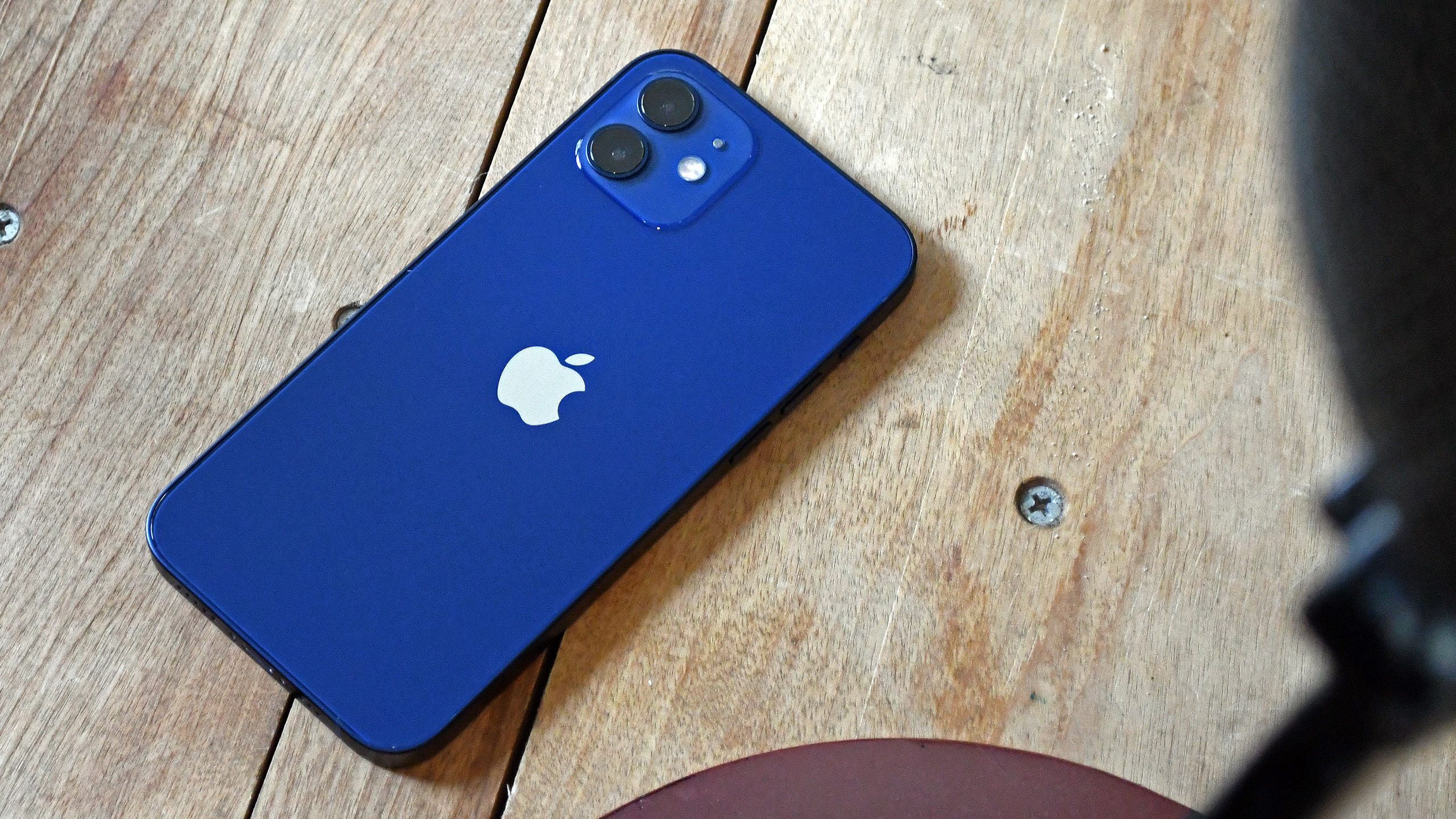
But Apple's resistance to change in key areas is still disappointing. Practically every major phone maker has stopped being stingy with base storage. The fact the iPhone 12 still only starts with 64GB is borderline criminal, especially in light of the iPhone 13's expanded storage.
Some may opt for the iPhone 13 instead, even though the iPhone 12 costs $100 less. The new iPhone delivers delivers faster performance, better cameras, and a smaller notch. But nearly a year after its arrival, the iPhone 12 is still very much worth buying.
Adam Ismail is a staff writer at Jalopnik and previously worked on Tom's Guide covering smartphones, car tech and gaming. His love for all things mobile began with the original Motorola Droid; since then he's owned a variety of Android and iOS-powered handsets, refusing to stay loyal to one platform. His work has also appeared on Digital Trends and GTPlanet. When he's not fiddling with the latest devices, he's at an indie pop show, recording a podcast or playing Sega Dreamcast.
Iphone 12 Compared To Iphone 8
Source: https://www.tomsguide.com/reviews/iphone-12
Posted by: troyothere.blogspot.com

0 Response to "Iphone 12 Compared To Iphone 8"
Post a Comment